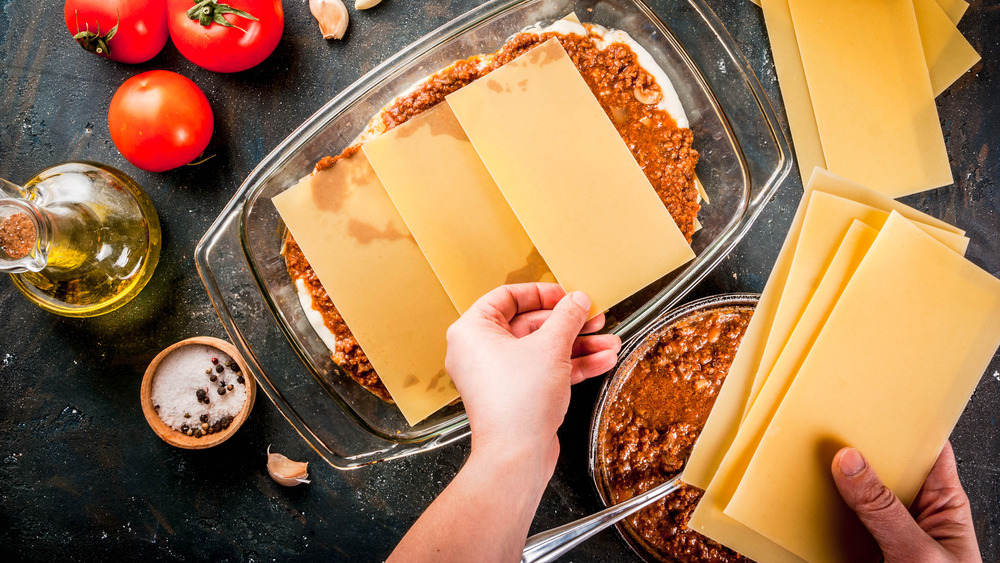How Authentic Lasagna Is Different From The American Version
Hear ye, hear ye: it will probably come as no surprise, but Americans have committed a culinary crime. And that crime is the thick, saucy abomination we dare to call lasagna. While you may know that we as a country like to take things like tacos, pizza, and Chinese food (A. Whole. Country.) and alter them beyond recognition of where they originated, so much so you may not know what the original version is like. In the case of lasagna, it's far from the gluey artery-bomb we turn to on potluck nights.
To start, lasagna takes many shapes, forms, and ingredients in different regions of Italy (via The Washington Post). Some Italians consider lasagna from Emilio-Romana to be its truest form — paper-thin sheets of pasta layered with creamy bechamel and bolognese, says The Washington Post. But then there's the Ligurian green lasagna of the northwest part of the country, thinly layered with pesto, without a tomato in sight. There's taleggio lasagna from Treviso, with vegetables, Taleggio cheese, plus shallots and mushrooms — scarce on meat, unless it's a smattering of pancetta (via Supermarket Italy). The site also says there's Lasagna alla Norma from Sicily, which uses eggplant instead of pasta.
Lasagna in Italy vs. America
And despite the offerings of each region vying for dominance, on this Italians can agree: In lasagna, fresh ingredients must be used, combined with care, and never overdone (via The Washington Post). Forget slapping together dried noodles that cook in the oven, thick bottled marina, ground beef and gobs of cheese — every time you do, an Italian nonna is turning in her grave. Lasagna was traditionally prepared over hours and days, using fresh, delicate pasta, explains The Washington Post. The noodles should be paper-thin and the sauce prepared from scratch.
How, America, could this special-occasion delicacy become the stuff of buffet lines and dining halls? For one, Neapolitan immigrants in America couldn't find the good stuff, so they did it with meat they found for cheap and without their Italian olive oil and mozzarella, states The Washington Post. Americans are known for our ingenuity and adaptation, even if it does give birth to a Hot Dog Bites Pizza. We also do things fast — so naturally we simplified and substituted, and when it comes down to it, we like what we like. Salvatore Esposito, who grew up in Naples and serves an Americanized version of lasagna at his restaurant knew this. "Americans don't want Italian lasagna," he said. "They want everything runny... So, I'm not stupid. I make what they want," he told The Washington Post. "It's not the real thing, but it tastes good."

